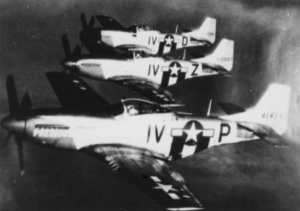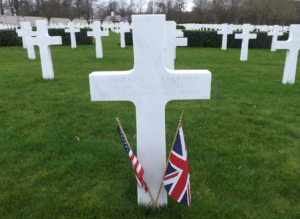Scroll of Honor – Lawrence Aldine Bearden
Cut Short
Written by: Kelly Durham
The headlines in The Tiger campus newspaper in August 1941 included nothing about the war that had  been raging in Europe for nearly two years, nothing about the war in China which had been going on even longer. Lawrence Aldine Bearden and the other new “rats” arriving at Clemson College as members of the Class of 1945 were treated to the exciting news that $110,000 in bonds had been sold to fund “Clemson’s long-cherished project—the construction of a 20,000 seat capacity modern stadium.”
been raging in Europe for nearly two years, nothing about the war in China which had been going on even longer. Lawrence Aldine Bearden and the other new “rats” arriving at Clemson College as members of the Class of 1945 were treated to the exciting news that $110,000 in bonds had been sold to fund “Clemson’s long-cherished project—the construction of a 20,000 seat capacity modern stadium.”
Bearden, a native of Westminster, came to Clemson from Greensboro, North Carolina to major in Textiles. While he and his classmates would in fact see the dedication of the new stadium during the 1942 season, by the following spring, they would be trading cadet gray for the khaki of the armed forces.
The end of the 1942-43 academic year brought great changes to campus. In order to keep pace with the manpower demands of the rapidly expanding US military, graduating seniors who had completed ROTC training were assigned to Officers’ Candidate Schools (OCS). The academic careers of underclassmen, like Bearden, were cut short as cadets were ordered to active duty. Those who performed well in basic training were given the opportunity to advance to OCS.
Bearden’s record earned him an officer’s commission in the Army Air Force. By the summer of 1944, Bearden had qualified for the most coveted job in the military—fighter pilot!
By August, Bearden was assigned to the 369th Fighter Squadron of the 359th Fighter Group. The 369th  was flying America’s newest and best fighter, the P-51 Mustang. The Mustang had superb flying characteristics plus the range to accompany US 8th Air Force heavy bombers all the way to their targets and back. This greatly reduced the numbers of the bigger, slower bombers that fell victim to German fighters.
was flying America’s newest and best fighter, the P-51 Mustang. The Mustang had superb flying characteristics plus the range to accompany US 8th Air Force heavy bombers all the way to their targets and back. This greatly reduced the numbers of the bigger, slower bombers that fell victim to German fighters.
On August 10, 1944, Second Lieutenant Bearden took off with other aircraft on a local training flight from the 369th’s home airfield at East Wretham in Norfolk County, England. Bearden was flying Darlin’ Earline, the aircraft usually assigned to Lieutenant Ferris Suttle. While flying in a string formation at approximately 8,000 feet, Bearden’s aircraft left the formation and then dove into the ground near the village of Garboldisham, less than eight miles from the base. The Army Air Force accident report failed to determine the cause of the crash, but the result was obvious enough: Bearden was killed and the Mustang destroyed.
Second Lieutenant Lawrence Aldine Bearden was buried at Cambridge  American Cemetery, Cambridge, England.
American Cemetery, Cambridge, England.
For more information about Lawrence Aldine Bearden visit:
http://soh.alumni.clemson.edu/scroll/lawrence-aldine-bearden/
For more information about Clemson University’s Scroll of Honor see:
